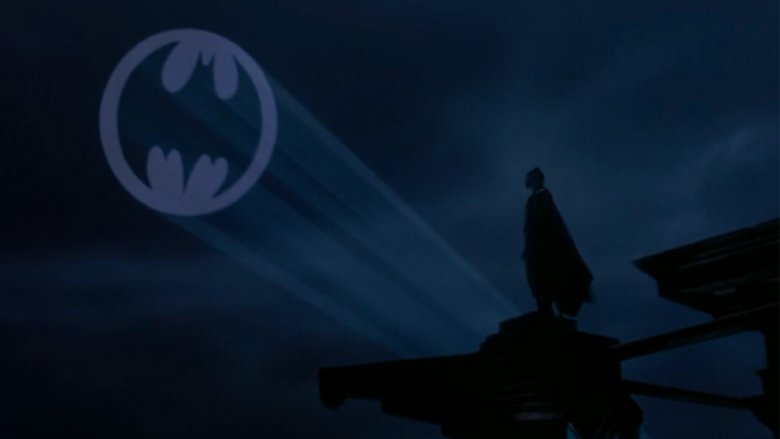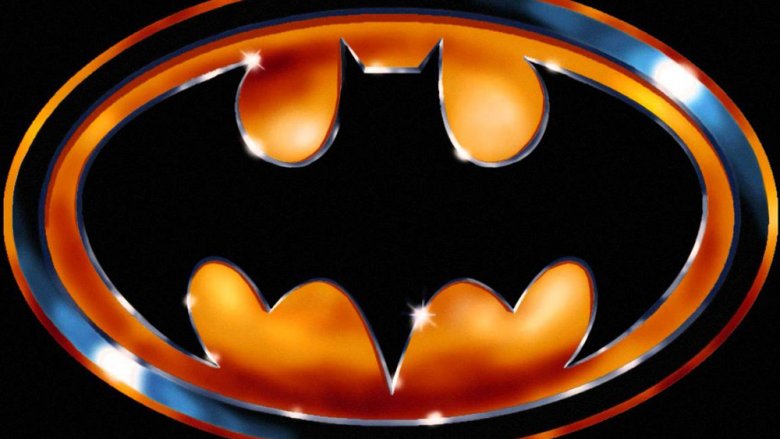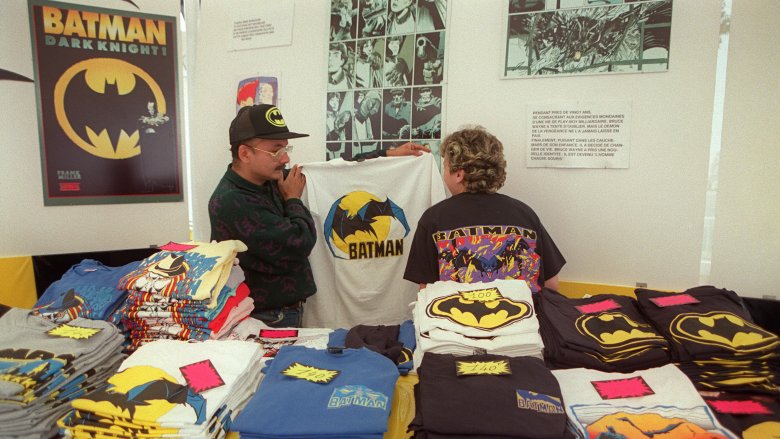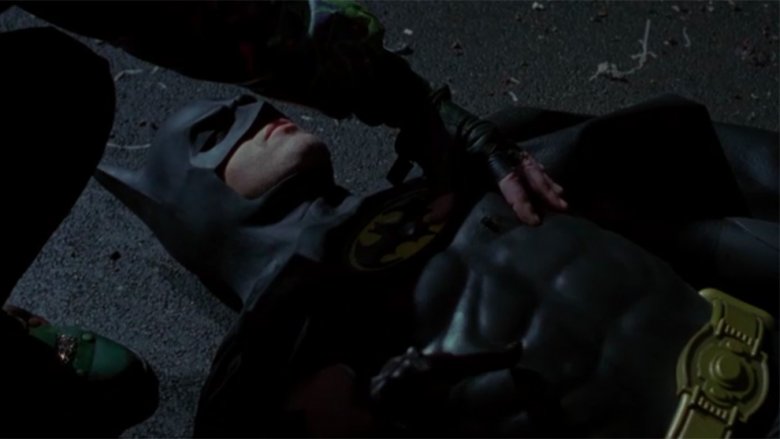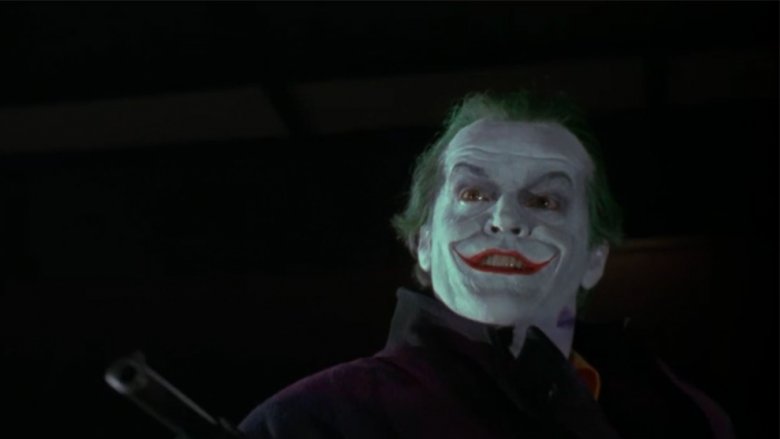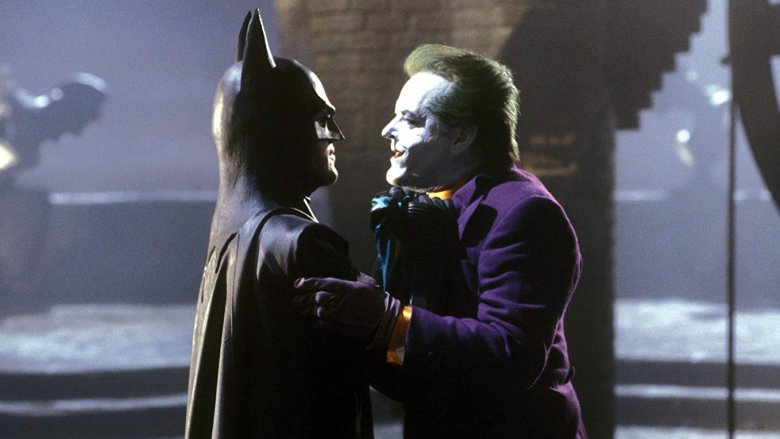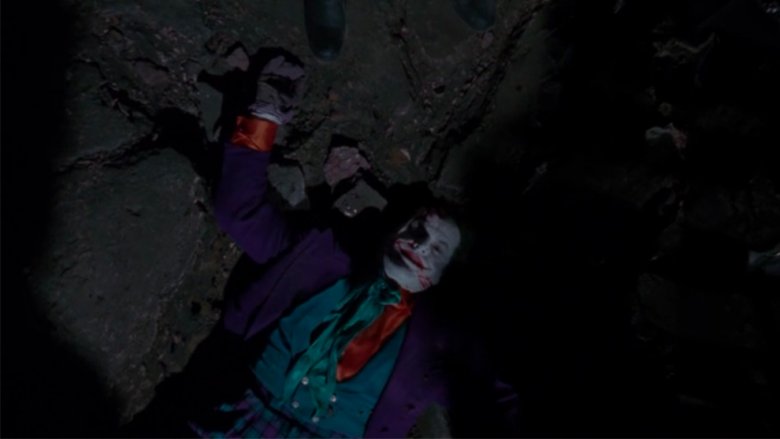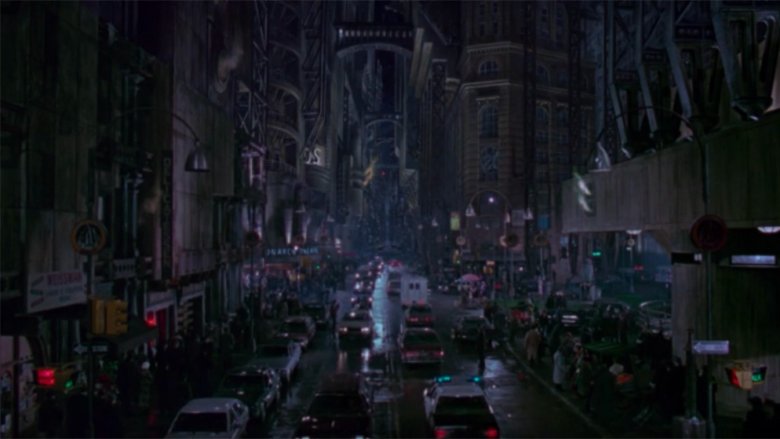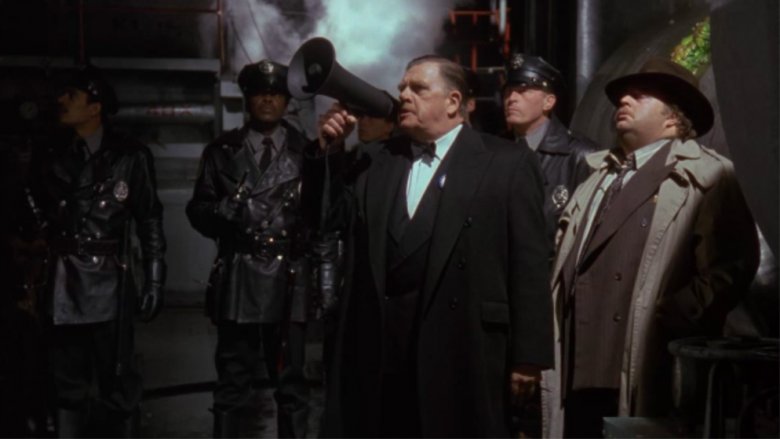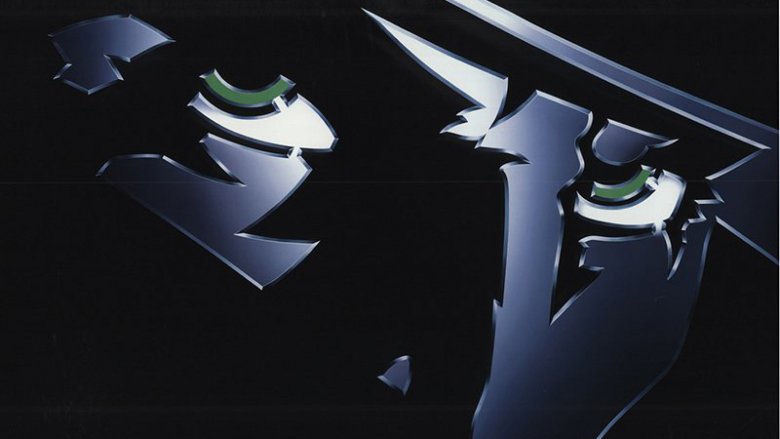How Batman 1989 Changed Superhero Movies And You Barely Noticed
Tim Burton's 1989 Batman film wasn't the first great superhero movie — it wasn't even the first great superhero movie about Batman. It was, however, a massive turning point for both the character and superhero movies in general, and was arguably the first big step towards superheroes becoming their own thing on film, and not just a subgenre of action or sci-fi movies made for kids.
In the 30 years since it hit theaters, virtually every superhero movie has been influenced in some way or another by what Batman '89 accomplished. In fact, the impact that it had on superhero movies has been so massive that in a world where it set the standards, you might not have even noticed how much of an effect it had. From memorable aesthetics to "realistic" costumes and all the way down to studios learning exactly the wrong lesson from a wildly successful movie about the Caped Crusader, here are the ways that Batman '89 changed superhero movies.
Massive marketing
For those of you who don't remember what it was like back in the days leading up to June 23, 1989, it cannot be stressed enough that Batman was everywhere that summer. Even in a year crowded with massively successful franchise movies like Indiana Jones and the Last Crusade and sequels to Ghostbusters and Back to the Future — not to mention The Little Mermaid, which heralded the dawn of the "Disney Renaissance" — the Dark Knight was downright inescapable.
This wasn't entirely a new thing, of course; movie marketing had existed for as long as movies had. Even in the realm of superhero movies, studios had never really been subtle about pushing their products, with Richard Donner's 1979 Superman film setting the standard with its iconic posters that told audiences that, in no uncertain terms, "You will believe a man can fly." The Batman marketing, however, was on a whole different level, sprawling out over countless tie-ins, from toys to breakfast cereals, all of which came with some of the strongest branding ever.
Those wonderful toys
Rather than putting the spotlight on director Tim Burton, stars Michael Keaton and Jack Nicholson, or even the character of Batman himself, the marketing was overwhelmingly focused on the singular iconic image of Batman's emblem. It started with the first poster, which was just the emblem and a release date, and continued all the way to the box for the VHS tape, spreading across countless t-shirts, hats, action figures, and pretty much everything else in the meantime. By reducing the entire idea of Batman down to that symbol, using the branding that had already been refined over the past 50 years of comics and pop culture, Warner Bros. seared that image into moviegoers' minds and sold an estimated $500 million in merchandise alone. Adjusting for inflation, that's over $1 billion in 2019, all before we even get to the box office take for the movie itself.
Weirdly enough, that iconic logo used in the marketing was not the one that Batman actually wore in the film — look closely, and you'll see a couple of extra spikes on the tail — but by the time audiences were in the theater, that hardly mattered.
Some kind of body armor
For a movie about a character famously known for being super-competent at crime-fighting and having a plan for every eventuality, one of the weirdest moments of Batman '89 comes right at the beginning. The very first thing we see Batman do after he descends silently onto a rooftop to confront two criminals who have just committed a mugging... is get shot and fall down. Seriously: this is our introduction to the Dark Knight, finally returning to the big screen for the first time in 23 years.
To be fair, though, the moment is more than just a comedic pratfall. Obviously, the crucial element here is that after being shot, Batman gets back up. It also showcases one of the movie's changes to Batman: his costume isn't just a costume, it's body armor that, in addition to giving him a weird carapace of abs, allows him to take a bullet and keep on fighting. Previous to this, Batman's costume had, like Superman's, been just that: a costume. There were occasional references to, say, the cape being fireproof, but it was usually drawn as just skintight material. Whenever legendary Batman artist Jim Aparo drew Batman without his gloves on, he even gave it the ribbed cuffs of a sweatshirt.
The movie's Bat-suit, however, was armored, presumably because the filmmakers assumed that an audience that could accept rocket cars and murder-clowns would find the idea that someone could fight crime without ever taking a bullet to the chest to be a little too hard to believe. That sparked a trend in superhero movies, not necessarily towards "realism" (because nothing in this movie is remotely realistic) but towards justification. Costumes and accessories had to be functional, and it's easy to draw a direct line from Batman's body armor through X-Men's leather suits being touted as superior to "yellow spandex" in 2000, all the way through the conversation in 2017's Justice League about how the Flash's costume was made from space shuttle parts.
"Wait 'til they get a load of me"
If there's one thing superhero movies love, it's an origin story. There's an obvious reason for it, in that telling the story of who someone is and how they came to be makes for an easy structure to build a movie around, and provides a bridge between the relatable world that the audience might expect to a fantasy where people are bitten by radioactive spiders or rocketed to Earth from exploding planets as babies. Of course, that also means that we've seen Peter Parker's Uncle Ben and Thomas and Martha Wayne get shot over and over on the big screen, to the point where it's way more surprising when we don't see it, but it's understandable.
Batman '89 definitely shows us the Wayne Family's ill-fated trip down Crime Alley, but there's another origin story that's far more important to the plot: the Joker's. Unlike the comics, where his identity has always been shrouded in mystery to the point of having conflicting origins, the movie gave us the straightforward story of Jack Napier, whose egregious pun name and "lucky deck" of cards lead him to take the identity of the Joker. It feels like something of an odd choice, if only because there's no real change before he takes his ill-fated acid bath. He's already a killer with a thing for playing cards and a wardrobe full of purple suits; his emergence as the Joker just makes him weirdly artistic in terms of his crimes.
Dance with the devil
The movie's most crucial plot change was making Napier the crook who shot Batman's parents, an element that was never a part of the comics, where the Waynes were shot by a mugger named Joe Chill. The intent here was to give Batman a personal connection to his arch-enemy that would go beyond just criminal vs. crimefighter. Batman would have a personal stake in getting his revenge, which brought the superheroic story more in line with a traditional action movie.
That set the tone for virtually every superhero movie that came after. Even when there was no personal connection between the characters, movies would often insert one in order to heighten drama. In Iron Man, for instance, Obadiah Stane wasn't just a rival businessman for Tony Stark, he was a father figure who had known him all his life and betrayed him. The Killmonger seen in the Black Panther movie has a familial tie to T'Challa that his comic book counterpart never did.
That's not limited to superheroes, either — this idea also had an effect on the Joker. While Heath Ledger's performance in The Dark Knight retained the character's mysterious, often conflicting origins, the upcoming Joker solo film is doing the exact opposite. It's even set to include both Thomas and Bruce Wayne as characters, giving Joaquin Phoenix's Joker the same sort of personal connection to Batman that we saw in 1989. Also, hilariously, this would make the Joker like 30 years older than Batman, which almost makes you feel bad for the guy once Bruce grows up and starts punching him in the face every other week.
Body count
Unlike comics, which are meant to go on forever with sequential stories, movies are seen as finite, even when they exist in the context of a larger franchise. As a result, rather than having to keep villains around for their next appearance, action movies tend to resolve their action by killing off the bad guy, and usually a handful of lesser enemies along the way. As the filmmakers tailored their vision of Batman to fit the mold of an '80s action spectacle, the Dark Knight's aversion to taking lives fell by the wayside.
In the comics, Batman has traditionally been written as a character who doesn't kill his enemies. In the movie, however, he racks up a body count that doesn't just rival the Joker's, it dwarfs it. He blows up a factory full of goons, shoots at his opponents with vehicle-mounted machine guns, chucks dudes off of a bell tower, and, in the end, has a pretty direct hand in killing the Joker as revenge for the Joker murdering his parents.
That idea, of treating superhero stories like action movies and resolving them in the same way, didn't necessarily start with Batman. Nine years earlier, Superman II ended with the Man of Steel, a character who was also traditionally written with an unbreakable code against killing, tossing the Phantom Zone Criminals down a bottomless pit in the Fortress of Solitude. Still, Batman codified it, setting up a pattern of supervillains dying at the end of movies, often at the hands of the good guys, that wouldn't really be subverted until Spider-Man: Homecoming swung into theaters.
A whole new Gotham
Nowadays, when you think of Gotham City, the image that comes to mind is of the sprawling, smoke-filled urban nightmare, with deep shadows and gargoyles leering down from every building, where clean Art Deco skyscrapers are shoved right up against buildings that might as well be modern gothic castles. It's the image of a city that's built for a character like Batman, and it's also an image that pretty much starts with this movie.
Gotham City has, of course, always had its share of character. In the '40s, artist Dick Sprang had littered Gotham's skyline with oversized advertisements like gigantic coffee pots and house-sized typewriters that made for exciting set pieces. As time wore on, however, Gotham was reimagined to evoke, as longtime Batman writer and editor Denny O'Neil put it, "Manhattan below Fourteenth Street at eleven minutes past midnight on the coldest night in November." Exaggerated, yes, but also much more "realistic," a heightened stand-in for the Big City.
All of that changed with the film. Tim Burton's greatest strength has always been in his distinctive visuals, and he and production designer Anton Furst put that on display in Batman '89. They recreated Gotham as an environment that was less like the New York you could actually visit and more like, as Burton described it, a city where "hell burst through the pavement and grew." The aesthetic stuck, too — Furst's designs were quickly incorporated into the comics canon in 1990, and Gotham has retained that distinctly hellish character ever since — but it was more than just an interesting visual. It lent a level of exaggeration to the movie that hadn't been seen with superheroes before. In 1978, Superman had brought the Man of Steel to our world; in 1989, Burton and Furst took us to Batman's city instead.
The '40s revival
Something that's often left out of discussions of Batman '89 is that in a lot of ways, it's far more inspired by the '60s TV show than the comics of the '80s. The colored knockout gas, the dutch angles, the colorful villains, the over-the-top rocket-powered Batmobile, the set piece in the "Flugelheim Museum," and even the idea of the Joker treating crime as an art form — these are all elements that hearken back to Adam West's tenure as the Caped Crusader. That makes sense, too. As much as the late '80s brought in groundbreaking, best-selling Batman comics like The Dark Knight Returns and Batman: Year One, the show's decades of syndication were still the most prominent version of the character in the larger pop culture.
There's one element, though, where Burton's film went way further back than 1966. In an effort to return to Batman's roots in the Golden Age of Comics, the style of the movie is largely inspired by the fashions and aesthetics of the 1940s. It's clearly set in the modern day — there are computers, modern cars, and, you know, Prince — but characters like Jack Napier and Alex Knox wear distinctly '40s-style suits, complete with hats. Even Harvey Dent's campaign for District Attorney is a visual reference to Citizen Kane.
The overall effect is that the movie's visuals are a very interesting blend of Batman's past and present, but in retrospect, it also serves as a sort of proof-of-concept for the superhero movie as a period piece. Again, it's clear that this movie is set in 1989 (albeit an alternate 1989 where everyone is still into double-breasted suits with wide ties and suspenders), but its success proved that building a superhero around visuals that were a step removed from the present could be done. It would take years for this to really pay off, but it's hard to imagine a world where we got to movies like Captain America: The First Avenger or X-Men: First Class without Batman paving the way for superheroes with a retro aesthetic.
The wrong lessons
Imagine that you're the head of a movie studio in July of 1989. Batman is everywhere, and you've watched while it took ten days to become the fastest movie to ever rack up $100 million at the box office. Clearly, that's the kind of massively profitable success that anyone would want a piece of. Obviously, the solution here is to make more superhero movies and capitalize on the characters that the public already loves, right?
Wrong. If you're making movies in 1989, you apparently look at the two highest grossing movies of the year — Indiana Jones and the Last Crusade, a throwback adventure set during World War II, and Batman — and decide that moviegoers are just super into movies about stuff that was popular in the '30s and '40s.
The years after Batman's titanic success saw a sudden flood of movies that attempted to capitalize on what studios clearly hoped was a trend. Dick Tracy (1990), The Shadow (1994), and The Phantom (1996) were all revivals of characters who had been hugely popular five decades earlier that leaned into their pulp aesthetics (especially Dick Tracy). The Rocketeer (1991) and The Mask (1994) were both based on newer comics that had been created in the '80s, but that were brought to the screen with the same kind of retro visuals. Darkman (1990) was an original superhero created for film that, like Batman, was set in a modern world that leaned heavily on '40s-style costuming and an old-school monster movie feel. It even extended to TV, where Darkwing Duck — secret identity: Drake Mallard — hit airwaves in 1991 as a full-on parody of The Shadow — secret identity: Kent Allard — a character with whom its target audience had zero familiarity.
Unfortunately for you, studio exec who really wanted people to love Lamont Cranston like you did when you were eight, you jumped onto the wrong trend. There were some good movies in that crop, but none were as memorable, beloved, or successful as Batman. It turned out that the public was far less interested in characters who hit their pop cultural peak 50 years ago than they were in actual superhero stories, and it would take another decade or two for them to come around to that one.
